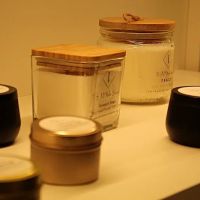Do Scented Candles Affect the Reproductive System? A Deep Dive into the Potential Health Impacts
- Understanding the Issue: Can Scented Candles Impact the Reproductive System?
- Fragrances and Health Risks: Are All Candles Harmful?
- Real-Life Stories and Experiences with Scented Candles
- How to Choose Safe Candles for Your Home
- Final Thoughts & Buying Guide: Scented Candles and Reproductive Health
1. Understanding the Issue: Can Scented Candles Impact the Reproductive System?
Scented candles have become a staple in homes worldwide, known for their ability to create a cozy atmosphere and pleasant aromas. But recently, there has been increasing concern about the potential health risks they pose, especially in relation to reproductive health. While it may seem harmless to light a fragrant candle, there’s growing debate about the chemicals released into the air as the candle burns. Some of these chemicals, like phthalates, are linked to hormone disruption and fertility issues.
So, do scented candles really affect the reproductive system? The answer isn't straightforward. In this article, we’ll break down the potential risks, what research says, and how to make informed choices when buying candles for your home.
2. Fragrances and Health Risks: Are All Candles Harmful?
Not all scented candles are created equal. The risk largely depends on the ingredients used in the candles. Traditional candles made with paraffin wax, which is a byproduct of petroleum, often contain synthetic fragrances and dyes. When burned, these candles release potentially harmful chemicals into the air, including toluene and benzene, which are carcinogenic.
Phthalates, commonly used to stabilize fragrances in scented candles, are another concern. These chemicals can interfere with the endocrine system and disrupt hormone production. Studies have shown that exposure to phthalates can affect fertility and reproductive organs, especially in males. For women, some studies suggest a link between phthalate exposure and complications in pregnancy.
However, it’s important to note that the level of exposure to these chemicals depends on various factors such as the size of the space, ventilation, and how frequently candles are burned. In small amounts, these chemicals may not pose a significant threat, but frequent exposure, especially in poorly ventilated spaces, could increase the risk.
id="real-life-stories-and-experiences">3. Real-Life Stories and Experiences with Scented Candles
To illustrate the potential risks, let’s look at a few real-life stories. In one case, a couple struggling with infertility began to explore lifestyle factors that could be contributing to their difficulty conceiving. After researching the chemicals in candles, they switched to soy-based, fragrance-free candles. Within a few months, they noticed a marked improvement in their overall health and fertility.
On the other hand, a study published in 2021 found that individuals who regularly burned heavily scented candles with synthetic fragrances experienced higher levels of phthalates in their blood. While the study didn’t definitively prove a direct link to fertility issues, the findings raised alarms about the long-term health effects of exposure to these chemicals.
These stories highlight the growing awareness among consumers about the importance of the ingredients in the products they use every day. It also shows the potential benefits of making small changes to reduce exposure to harmful chemicals in your environment.
4. How to Choose Safe Candles for Your Home
Choosing the right candle for your home is crucial if you want to avoid potential health risks. Here are some tips to help you pick candles that are safer for your reproductive health:
- Opt for natural waxes: Choose candles made from soy, beeswax, or palm wax. These natural alternatives burn cleaner and release fewer toxic chemicals.
- Check for phthalate-free fragrances: Look for candles that use essential oils or natural fragrance oils. Avoid candles that list synthetic fragrances on the label.
- Avoid artificial dyes: Some candles use artificial dyes to color the wax, which can also release harmful toxins when burned. Stick to natural or uncolored candles.
- Ensure proper ventilation: When burning candles, make sure the room is well-ventilated to reduce the buildup of any harmful fumes.
If you're looking for high-quality, safe candles, you might want to check out options like those available at Scent Snob, where you can find a wide range of candles made with natural ingredients and phthalate-free fragrances.
5. Final Thoughts & Buying Guide: Scented Candles and Reproductive Health
In conclusion, while there is still ongoing research into the exact effects of scented candles on reproductive health, it's clear that certain ingredients can potentially cause harm. By choosing candles made from natural waxes and using non-toxic fragrances, you can enjoy the benefits of a fragrant, relaxing environment without compromising your health.
If you're looking to make healthier choices, consider switching to high-quality candles that prioritize safety and sustainability. Visit Scent Snob for a curated selection of safe, beautifully scented candles that won't harm your reproductive system.




0 comments